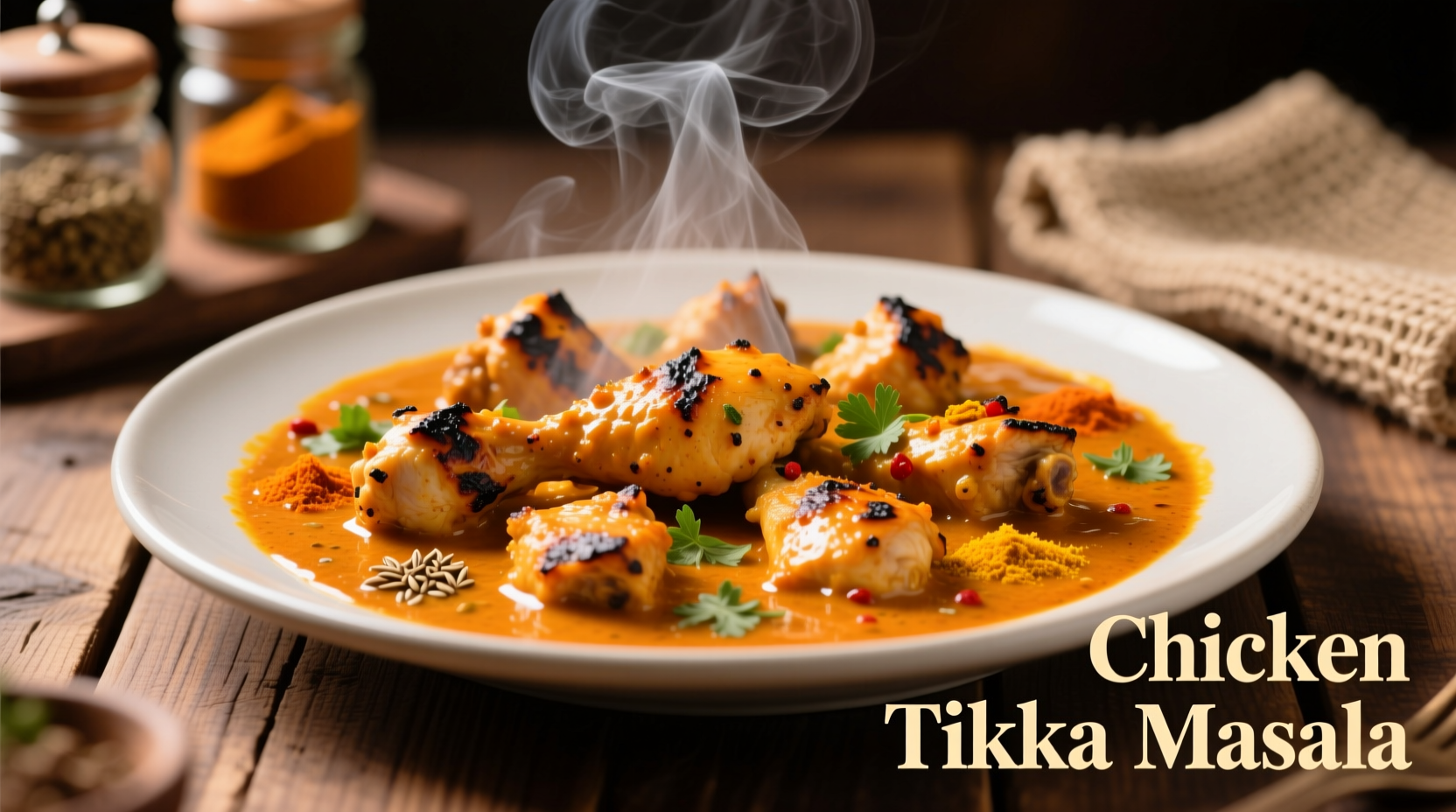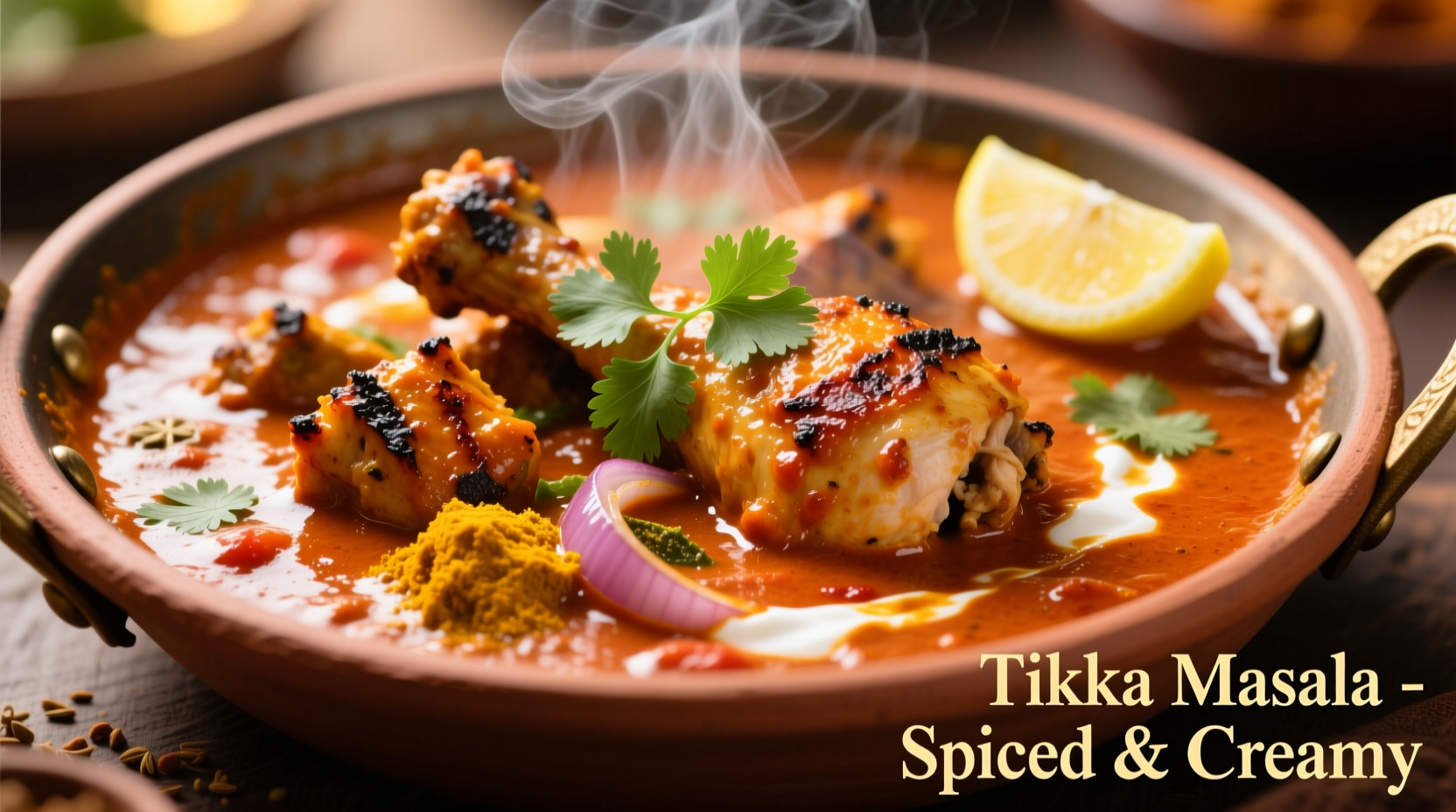The Signature Flavor Profile of Tikka Masala
When you take your first bite of authentic chicken tikka masala, you're greeted by a velvety sauce that immediately coats your palate with creamy richness. The initial impression combines the subtle tang of yogurt-marinated chicken with the sweet acidity of tomatoes, creating a perfect balance that's neither too sharp nor overly sweet. As the flavors develop, you'll notice warm spices—cumin providing earthiness, coriander adding citrus notes, and garam masala contributing complex warmth—working together without overwhelming heat.
Unlike many Indian curries that deliver immediate spice intensity, tikka masala's heat builds gradually, typically reaching only mild to medium levels (2-4 on a 10-point scale). The signature creaminess comes from either coconut milk in Southern Indian versions or dairy cream in Northern preparations, which tempers any potential spice while enhancing the sauce's luxurious texture. This careful balance explains why food anthropologists consider tikka masala the "gateway curry" that has introduced millions to Indian cuisine worldwide.
How Ingredients Create the Distinctive Taste
The magic of tikka masala happens through careful layering of ingredients. The chicken undergoes a dual preparation process: first marinated in spiced yogurt (creating tender, flavorful meat with subtle tang), then traditionally cooked in a tandoor oven (adding smoky notes that distinguish it from other curry dishes). The sauce itself follows a precise sequence:
- Base foundation: Onions slowly caramelized to natural sweetness
- Spice bloom: Whole spices toasted to release essential oils before grinding
- Tomato integration: Fresh tomatoes or tomato puree adding bright acidity
- Cream finish: Dairy or coconut milk creating smooth texture and balancing flavors
This methodical approach creates what culinary scientists call "flavor layering" – where each component contributes distinct notes that build upon one another rather than competing. The result is a sauce that feels simultaneously complex and cohesive, with no single flavor dominating the experience.
Authentic vs. Westernized Versions: What to Expect
While tikka masala has become a global favorite, significant variations exist between authentic preparations and Western adaptations. Understanding these differences helps set proper flavor expectations:
| Characteristic | Authentic Tikka Masala | Western Adaptation |
|---|---|---|
| Spice Complexity | Multiple whole spices toasted and freshly ground | Pre-mixed curry powder with simplified profile |
| Creaminess Source | Often coconut milk in Southern India; dairy cream in North | Heavy cream or tomato paste base |
| Heat Level | Mild background warmth (2-4/10) | Often reduced to near-zero heat |
| Sauce Texture | Smooth but with visible spice particles | Uniformly smooth, often thickened with flour |
| Flavor Balance | Clear sweet-tangy-spicy equilibrium | Often overly sweet or one-dimensional |
Evolution of a Global Favorite
Despite common misconceptions, tikka masala's history reveals a fascinating journey from regional specialty to international phenomenon:
- 1940s-1960s: Origins in Punjabi cooking as "murgh makhani" (butter chicken), created accidentally when厨师 added tomato soup to dry tandoori chicken
- 1970s: Adapted by Bangladeshi chefs in UK as "tikka masala" to appeal to British palates, incorporating cream and milder spices
- 1980s-1990s: Standardized in Indian restaurants worldwide, with regional variations emerging
- 2000s-Present: Recognized as Britain's national dish while maintaining popularity across North America and Europe
This evolution explains why food historians note significant differences between restaurant versions. The dish's adaptability—maintaining core flavor principles while accommodating local preferences—contributes to its enduring global appeal.
What to Expect When Ordering or Cooking
Whether you're ordering at a restaurant or preparing tikka masala at home, understanding the sensory timeline enhances your appreciation:
- First impression: Aroma of toasted spices and creamy tomato base
- Initial taste: Creamy texture with subtle tang from yogurt-marinated chicken
- Mid-palate development: Warm spices emerging (cumin, coriander, cardamom)
- Heat progression: Mild warmth building gradually, never overwhelming
- Aftertaste: Balanced finish with lingering notes of garam masala and cream
When properly prepared, tikka masala shouldn't feature any single dominant flavor. Instead, it offers what culinary experts call "flavor harmony" – where multiple elements work together to create a unified, satisfying experience. This balance makes it exceptionally food-friendly, pairing beautifully with basmati rice, naan bread, and cooling accompaniments like raita.

Practical Tips for Flavor Appreciation
Maximize your tikka masala experience with these professional recommendations:
- Identify authentic versions: Look for visible whole spices in the sauce rather than uniform orange color
- Temperature matters: Serve at proper temperature (165°F/74°C) to fully experience flavor complexity
- Pairing wisdom: Complement with cooling elements like cucumber raita to refresh palate between bites
- Home cooking tip: Toast whole spices before grinding to maximize flavor extraction
- Dining out clue: Authentic versions often feature chicken with slight char marks from tandoor cooking
Understanding these nuances transforms tikka masala from a simple meal into a culinary experience that reveals new dimensions with each bite. The dish's enduring popularity stems from this remarkable balance—complex enough to intrigue experienced palates yet approachable for those new to Indian cuisine.
Frequently Asked Questions
Is tikka masala spicy hot?
Tikka masala typically features mild to medium heat (2-4 on a 10-point scale). The cream and tomato base balance any spice, creating gradual warmth rather than immediate heat. Authentic versions use Kashmiri chilies which provide color and subtle warmth without intense burning sensation.
How does tikka masala differ from butter chicken?
While similar, butter chicken (murgh makhani) has a richer, butter-forward sauce with simpler spice profile. Tikka masala features more complex spice blend including garam masala, with slightly tangier tomato base and distinctive creaminess. The chicken preparation also differs, with tikka masala using yogurt-marinated pieces.
Why does tikka masala taste sweet?
The sweetness in tikka masala comes from caramelized onions in the sauce base, not added sugar. Authentic versions balance this natural sweetness with tomato acidity and yogurt tang. Western adaptations sometimes add sugar to appeal to local palates, but traditional preparations rely on ingredient harmony rather than added sweeteners.
What gives tikka masala its distinctive orange color?
The characteristic orange hue comes primarily from Kashmiri chilies and tomato base, not food coloring. Kashmiri chilies provide vibrant color with mild heat. Some restaurants enhance the color with tomato paste or paprika, but authentic versions achieve their color naturally through spice selection and cooking technique.
Can you taste the individual spices in tikka masala?
In authentic preparations, you should detect distinct spice notes that work in harmony: cumin's earthiness, coriander's citrus notes, cardamom's floral warmth, and garam masala's complex blend. The best versions create what chefs call "flavor layering" where spices emerge sequentially rather than blending into a single indistinct taste.











 浙公网安备
33010002000092号
浙公网安备
33010002000092号 浙B2-20120091-4
浙B2-20120091-4